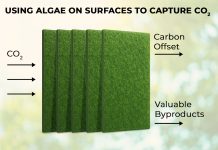Water is essential to life and there is no substitute to it. It is one of the most important natural resources on Earth contributing in many aspects of our lives, namely economy, ecosystems, and personal welfare. In our modern societies, water is essential to many industries and to agriculture. With expected growth of the population and urbanization, combined with climate change with its unpredictable consequences, it is obvious that demand for fresh water will be increased within the next few decades. This is particularly the case in developing and fast growing countries where rapid industrialization significantly increases demand for water at levels that are exceeding supply capacity of existing water sources, driving up the cost of raw water for industrial applications. A severe water stress is thus resulting with clear effects on supply of safe drinking water and access to adequate sanitation services for the population. Consequently, there is an emerging gap between safe freshwater availability and water demand. The future water needs of society, business and the environment will thus be heavily constrained by the scarcity and quality of freshwater.
To ensure sustainability of water resources, major efforts must be made by key stakeholders particularly governments, industries, companies, development organizations and the civil society. Immediate actions such as implementation of governance policies as well as improvement of management practices on an operational level by industries must clearly be considered. From the government standpoint, various water initiatives are actually studied. Those include water footprinting, business risk assessment frameworks, reporting and disclosure protocols, as well as standards and certification frameworks. These efforts will result in recommendations on policies, approaches, and mechanisms through which water can be better managed and to protect the resource. However, such policies will force industries to review their actual management practices and develop new approaches and strategies. A new mindset should drive collaborations between major institutions to help conserve water as an essential commodity for future generations.
Wastewater recycling is a potential avenue to reduce fresh water demand by industries generating large volume of contaminated effluents. Reusing wastewater is an attractive economic alternative to help them reduce their fresh water consumption. However, advanced wastewater treatment methodologies will be mandatory to allow reduction of freshwater consumption with minimum detrimental effects on plant operations and product quality. We are actually conducting studies to develop a new bio-based sorbent for water and wastewater treatment applications. The sorbent is a multifunctional filter media made from electrospun nanofibers. It will be used for the removal of contaminants from aqueous solutions. The main features of the device is that it is a non-woven three dimensional porous mats made of randomly laid nanofibres in the size range of 3 nm to 5 µm produced by electrospinning which provide a physical, sized-based separation mechanism for the filtration of contaminants. Polymeric nanofibres with very small diameter have unique properties, such as high specific surface area and surface functionalities. It is possible to make nanofibrous media with low basis weight, high permeability and small pore size that should overcome common technical problems encountered with most usual processes used for water treatment, namely packed bed adsorption column and membrane filtration. Such a device should be able to generate low pressure drop, high adsorption capacity and low fouling behaviour. Actually we are investigating Chitosan for nanofibre production. Chitosan is attractive since it has a strong chelation potential for heavy metals due to the presence of amine and hydroxyl groups on the surface that are involved in the adsorption process. Chitosan is a biodegradable, natural, and non-toxic polymer derived from chitin which is readily available at a very cheap cost, since it is essentially a waste product from the fishing and marine industries. Our recent investigations have shown that chitosan is very effective for the removal of metallic ions (copper, cadmium, zinc) from aqueous solutions. The device will also be used to test real wastewaters from the mining industry and municipal wastewaters targeting emerging contaminants released by chemical and pharmaceutical industries.
Prof Bruno Chabot
Chemical engineering department
Université du Québec à Trois-Rivières
3351 boul. des Forges, C.P. 500
Trois-Rivières, Québec, CANADA
G9A-5H7








